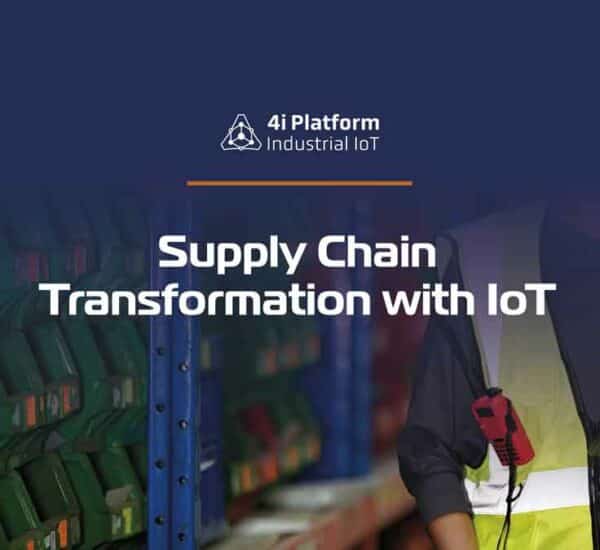Different industries are increasingly using the Internet of Things (IoT) which is becoming a more prominent part of people’s everyday lives.
One can connect nearly any device to the Internet, consequently, this provides more data than ever before.
The ever-present connectivity is able to dramatically change people’s lives and the way businesses operate across all industries.
Industries which have adopted IoT
Nowadays, there has been an increase of the presence of IoT in different industries, including insurance and manufacturing, among others. The adoption of these solutions in these industries is starting to bear fruit.
Insurance
One of the different industries which uses IoT is the insurance industry. Data, this industry’s greatest asset, gains even more importance with the adoption of AI technologies throughout the industry.
Insurance companies can make customized policies based on customer’s activities and habits. If data proves that someone is a safe driver, then they may be eligible for better coverage at a reduced cost.
Insurance companies can use sensors in every device from watches to household appliances to provide valuable information about the customer’s risk level. Insurance companies must partner with IoT companies to make the most of this data.
An example of this is that State Farm and Generali have become associates with Canary and Nest. For instance, Progressive, an auto insurance company, also uses onboard diagnostic devices with AI technology to test drivers’ abilities.
Healthcare
IoT is good news for healthcare professionals as it means better quality, greater access to information, and lower costs.
A network of connected devices can collect more data to aid in diagnosis and prevention of the patient’s condition.
Healthcare providers can avoid manual data collection errors by using connected IoT devices. Instead, sensors collect patient physiological data, then an AI algorithm analyzes it, and it sends it to the primary caregiver as actionable information.
IoT can help reduce hospital visits and costs by allowing doctors to remotely monitor patients’ symptoms as well as allowing patients to communicate securely with their doctor.
The diagnosis of a condition might require for the patients to be closely monitored for 48 hours; however, they would be asked to resume their normal lives while being diagnosed. Before IoT became popular in different industries, patients would have needed admission to a hospital for the required time, but now, they can attach a monitor to their bodies to track their progress.
Finance
Although IoT has an impact on almost every facet of the financial industry, the biggest area of IoT benefits is payment transaction security.
Fraud is a major problem in the financial industry. It negatively affects consumers and businesses as well as banks. Every financial institution must take these crimes under control. The IoT has some powerful fraud prevention capabilities.
Security innovations in payment transactions have resulted in new IoT payment options such as Apple Pay, Google Pay, and other smartphone- and wearable-based payment systems.
Some banks, such as Diebold, are creating smart ATMs that allow customers to make bank transactions with IoT conveniences such as smartphone-scheduled appointments and increased security via biometric scanners.
Retail
Retail is one of the different industries which has adopted IoT, and this adoption is starting to pay off.
Some stores use smartphones as virtual assistants in-store to help customers shop more efficiently. This allows them to personalize their shopping experience and to give them a more personal attention without relying on employees.
Smart shelving, which can count stock items accurately, is another way to avoid human error. This allows for easier tracking and a better customer experience online and in-store. It also ensures that inventory accurately reflects the actual stock at the store.
Fashion
Although it may seem unlikely that the fashion industry will benefit from IoT connectivity due to its long manufacturing processes, it is a great fit.
Designers do not have to design, measure, and cut styles that will need recutting or redesigning for production. Instead, they can use connected augmented reality tools, 3D imaging, and 3D modeling to transform their designs into patterns.
Automated cutting and sewing machines will then be able to follow the designs to create a product. IoT devices give designers more freedom and speed in their craft, beyond the fashion-forward accessories and new connected materials.
Childcare
Unknown conditions are one of the most difficult aspects of raising children. Data collected and processed through IoT can help fill in the gaps.
Devices such as TempTraq, a smartphone-connected temperature tracking patch, or Sproutling (a child-sized ankle bracelet that monitors temperature, heartbeat, and other measurements) are designed to provide parents with peace of mind and prompt alerts when something is amiss.
The latest baby monitors are also compatible with smartphones so that parents can check on their child from anywhere and at any time.
Transport
Did you ever arrive at an event with just minutes to spare and then spend half an hour looking for parking? In time, this will no longer happen with IoT.
Many cities possess smart parking solutions to monitor parking lots and direct drivers to the nearest spaces.
This saves time and reduces pollution. Another IoT use is to enable public transportation to use sensors to track vehicle and route status. Riders know when their train or bus will arrive at their stop so that they do not get surprised by early arrivals or late departures.
Consumers will benefit from better vehicle sensors. This means better preventative maintenance. Manufacturers are adding more IoT capabilities to their vehicles as they become cheaper and better in terms of quality. This makes it easier for mechanics, and, ultimately, it can increase the lifespan of your vehicle.
Manufacturing
IoT in manufacturing can increase efficiency and improve communication.
A decade ago, reporting a problem in a machine or piece of machinery at a factory was a tedious process that took valuable time. The supervisor would then contact the employee who first noticed the problem and have the machine stopped. The supervisor would then contact an individual responsible for fixing the problem and coordinate their efforts with the productivity on the factory floor.
Supervisors can access real-time data directly from the factory floor, so they can receive alerts of any irregularities and can respond accordingly.
IoT allows manufacturing companies to have greater control over their processes and solve problems faster and more efficiently.
Advertising
Advertising that speaks to your needs is more effective and can change the way you think.
Google and Facebook have exploited web surf habits for years, however, IoT gives more personal information about the customers.
A profile can now be created using your smartphone, computer, smart home devices and fitness sensors. Advertisers will be able to know what you want before you even realize it.
Advertisers can create individual consumer profiles for each person by connecting devices and their sensors. This allows for more targeted, personalized, and effective marketing campaigns.
Shipping
Although it may seem simple to move inventory and packages from one point to another, the complex nature of moving them is quite complicated.
Its complexity makes it an ideal sector for IoT transformation.
With various sensors located at global checkpoints, real-time tracking of shipments allows for less lost shipments and accurate measurements of vessel capacity.
IoT connects all components, reducing human error in shipping.
This improvement in the supply chain is only the beginning. Higher communication throughout the shipping process will eventually lead to more effective and accurate deliveries.





